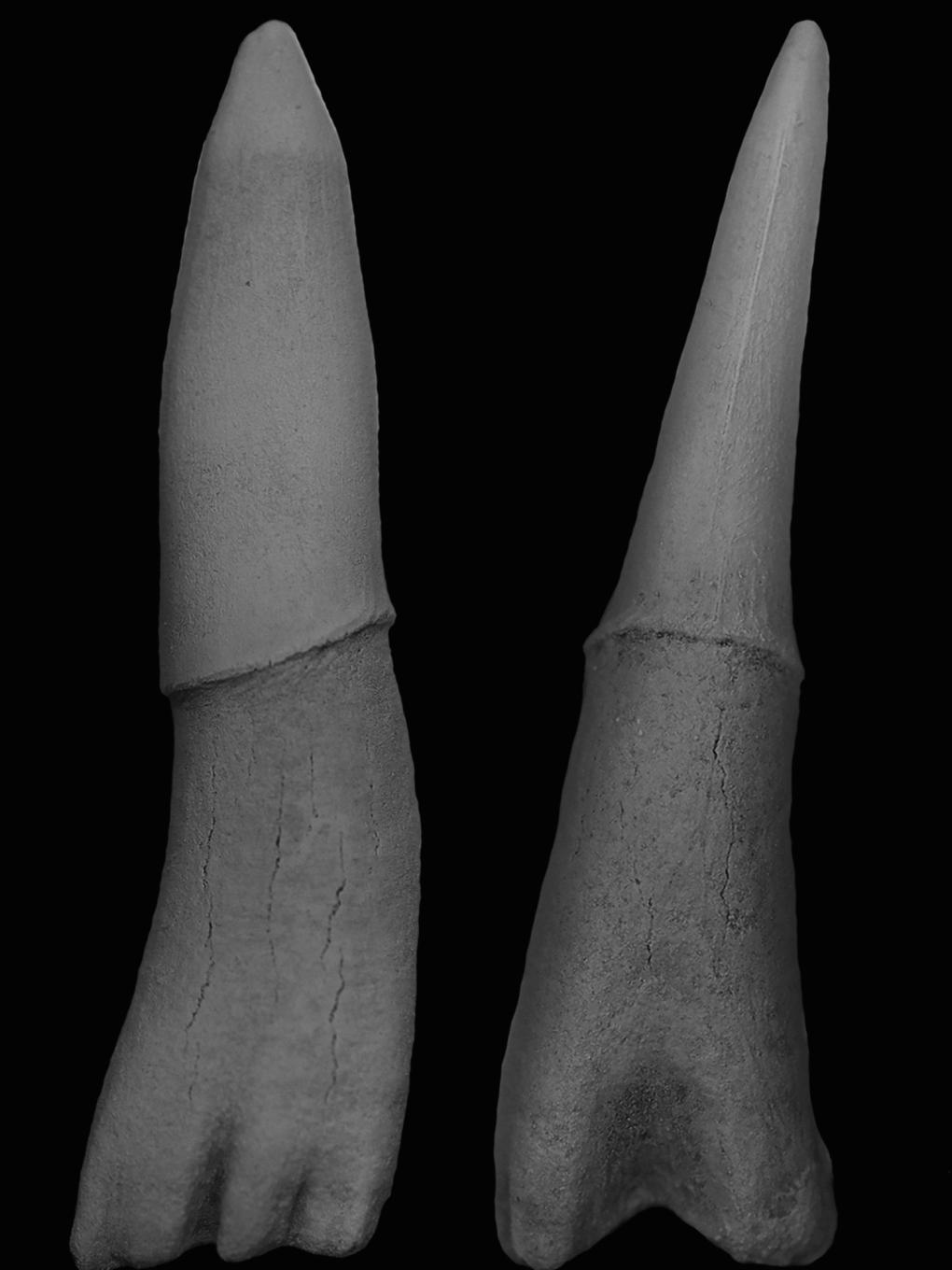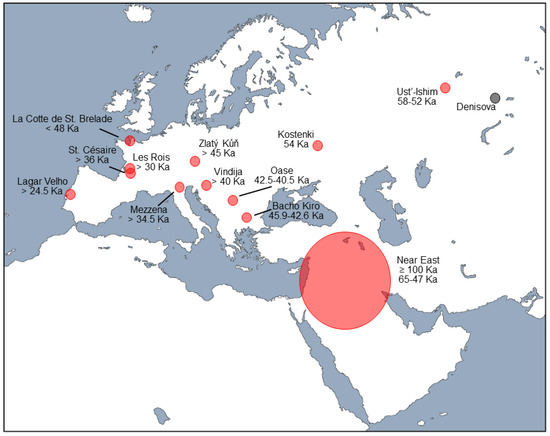2022-08-23 ペンシルベニア州立大学(PennState)

A rostral denticle of Ischyrhiza mia, a species belonging to an extinct group of sawfishes that lived in North American waters during the late Cretaceous period, around 100 to 65 million years ago. The sample was recovered from a rock formation in New Jersey. Credit: Todd Cook, Penn State (Courtesy: Wiley Publications). All Rights Reserved.
研究チームは、約1億〜6500万年前の白亜紀後期に北米海域に生息していたノコギリザメの絶滅グループに属する種、Iscyrhiza miraの吻側歯列の化石を調査した。このサンプルは以前、ニュージャージー州の岩石層から回収されたものです。
Ischyrhiza mira吻側歯列と現代のサメの歯は、エナメル質の大部分がフッ素アパタイト微結晶で覆われており、その束は明瞭にまとまっていることに着目したのである。エナメル質の外側の領域では、これらの束は歯の表面と平行に走っており、「平行束エナメル質」と呼ばれている。深部では、束はランダムに配置されるようになり、”tangled bundled enameloid “と呼ばれる領域となります。最後に、これらの層を通過して、歯の表面に垂直に配向した微結晶が詰まった “放射状束状エナメロイド “がある。
機能面では、微結晶の束がさまざまな方向に配置されていることで、サメの歯は摂食に伴う機械的ストレスに耐えられる。同様に、Ischyrhiza miraの吻側歯列のエナメル質の束状の微結晶の配置も、機械的な力に耐える方法として機能していたと思われる。
今回の発見は、『アウトサイド・イン』仮説を支持する直接的な証拠となるす。なぜなら、ウロコには、口の外で複雑な歯のようなエナメル質を進化させる能力があることが明らかになった。これらの構造が両方とも独立して同様のエナメル質を進化させたと結論づけるよりも、ウロコが歯と吻側歯列で同様の束状の微細構造を作り出したと示唆する方がより簡略化される。
<関連情報>
- https://www.psu.edu/news/research/story/sawfish-fossils-suggest-teeth-likely-evolved-body-scales-ancient-fish/
- https://onlinelibrary.wiley.com/doi/full/10.1111/joa.13676
Ischyrhiza mira吻側歯列の複雑なエナメル質微細構造 Complex enameloid microstructure of †Ischyrhiza mira rostral denticles
Todd D. Cook,Jack Prothero,Michael Brudy,Jerome A. Magraw
Journal of Anatomy Published: 20 April 2022
DOI:https://doi.org/10.1111/joa.13676
Abstract
Serving in a foraging or self-defense capacity, pristiophorids, pristids, and the extinct sclerorhynchoids independently evolved an elongated rostrum lined with modified dermal denticles called rostral denticles. Isolated rostral denticles of the sclerorhynchoid Ischyrhiza mira are commonly recovered from Late Cretaceous North American marine deposits. Although the external morphology has been thoroughly presented in the literature, very little is known about the histological composition and organization of these curious structures. Using acid-etching techniques and scanning electron microscopy, we show that the microstructure of I. mira rostral denticles are considerably more complex than that of previously described dermal denticles situated elsewhere on the body. The apical cap consists of outer single crystallite enameloid (SCE) and inner bundled crystallite enameloid (BCE) overlying a region of orthodentine. The BCE has distinct parallel bundled enameloid (PBE), tangled bundled enameloid (TBE), and radial bundled enameloid (RBE) components. Additionally, the cutting edge of the rostral denticle is produced by a superficial layer of SCE and a deeper ridges/cutting edge layer (RCEL) of the BCE. The highly organized enameloid observed in the rostral denticles of this batomorph resembles that of the multifaceted tissue architecture observed in the oral teeth of selachimorphs and demonstrates that dermal scales have the capacity to evolve histologically similar complex tooth-like structures both inside and outside the oropharyngeal cavity.


